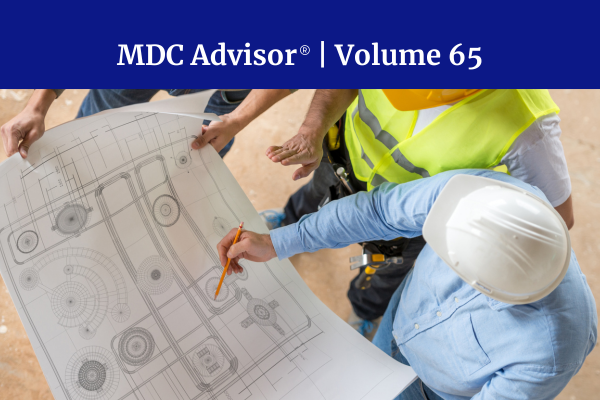
Risk Management
One of the most effective ways to avoid unnecessary construction problems is to ensure that a complete and thorough design review is performed at the A/E level prior to drawings and specifications going out to bid.
The design review should be performed by the architects and engineers that are preparing the plans and specifications for the project. While it is commonly accepted that all plans and specifications are reviewed before being issued, we have found that this is not always the case. Competing pressures to both conserve budget and accelerate the bidding phase of the project often lead to shortcuts in the process.
We have found that the most effective way to determine inadequacies and/or mistakes in the plans and specifications is for a formal design review to be conducted. This most often begins with a review of each architectural drawing by the architect while the other members of the A/E team review the discussion and explanation of the architect’s intent.
During a number of design reviews, it was our experience that significant disagreements would occur before even one third of the architect’s drawings had been reviewed. Misinterpretations between the architect’s intent and the actual drawings being produced often occurred and could be corrected during the design review. Initially, coordination of the drawings between the architects and structural engineers reveal where the resulting geometry of the structure conflicts with the architectural intent. Once these issues have been resolved, then a second more subtle series of potential problems arise in the coordination and allocation of space for mechanical, electrical and plumbing systems. Once the primary disciplines are reviewed, checks for Fire Protection, Control Systems, Security, and Communications will need to be completed.
The secondary coordination issues are the prime areas where major change orders are likely to result if not corrected during the design review process. Clients are no doubt told that design coordination reviews are conducted as a matter of course and all comments and adjustments are noted and corrected prior to the issue of bidding documents.
While this is the standard in the industry, in many cases it is not performed as noted above under the pressures of time and money. It is estimated that every hour spent by the design team is equivalent to 10 hours of field labor. Obviously the potential construction savings and delays that can result from the design review are indeed large and should be taken advantage of on all projects.
Should you find yourself in the position of an owner or developer at the design completion stage of a project, take advantage of the opportunity to request to be present at a design review session and watch the dynamics of the exercise unfold. Your presence at such a review meeting will ensure that you get an integrated and coordinated set of bid documents and thereby avoid unnecessary change orders resulting from a failure to communicate among the key design disciplines. If by chance you happen to see a note on any of the drawings that says “provided by others” a good question would be … who are those guys?
MDC Systems® provides front end project planning services for peer review of design, constructability, scheduling and estimating. Our 50 years of consulting experience provide us with insight into the plethora of “things that go wrong” on many projects.
Author: Robert C. McCue, PE, MDC Systems®
Article Featured In the September, 2017 MDC Advisor



0 Comments